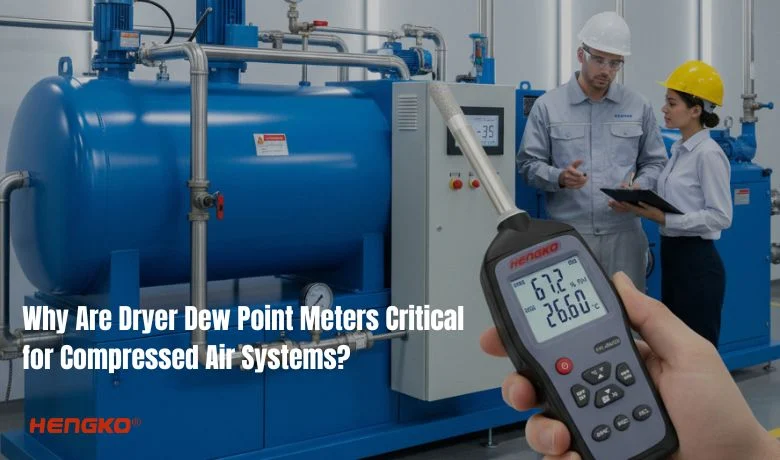Introduction
Temperature and humidity sensors play a crucial role in various industries, including environmental monitoring, HVAC systems, industrial automation, and agriculture. However, over time, these sensors may drift from their original accuracy due to aging, environmental exposure, or physical wear. Calibration is the process of adjusting the sensor to match a known reference, ensuring its readings remain accurate and reliable.
In this guide, we will walk you through the importance of calibration, different methods, and a step-by-step process to properly calibrate your temperature and humidity sensors for optimal performance.
Understanding Sensor Calibration
What Is Calibration?
Calibration is the process of adjusting a sensor’s output to match a known reference value. It corrects deviations that may have occurred over time, ensuring the sensor provides precise and consistent readings.
How Often Should You Calibrate?
The frequency of calibration depends on several factors:
–Application Sensitivity – High-precision industries (e.g., pharmaceuticals, laboratories) may require monthly or even weekly calibration.
–Environmental Conditions – Harsh environments (e.g., high humidity, exposure to chemicals) can cause sensors to drift faster.
–Manufacturer’s Recommendations – Many sensors come with a suggested calibration schedule.
*As a general rule, most temperature and humidity sensors should be calibrated at least once a year, though high-precision applications may require calibration every 3 to 6 months.
Factors Affecting Sensor Accuracy
–Environmental Exposure: High humidity, extreme temperatures, and chemical contaminants can affect sensor performance.
–Sensor Aging: Over time, components inside the sensor degrade, leading to measurement drift.
–Physical Damage: Shock, vibration, or improper handling can impact calibration.
Methods of Calibration
There are several methods to calibrate temperature and humidity sensors, each with varying levels of precision and complexity.
1. Comparison Method (Using a Reference Sensor)
-Involves placing the sensor next to a high-precision reference sensor in a controlled environment.
-The readings are compared, and adjustments are made if discrepancies exist.
-Suitable for quick and easy calibration but requires a reliable reference sensor.
2. Two-Point Calibration
-Uses two fixed reference points (e.g., 0°C and 50°C for temperature or 33%RH and 75%RH for humidity).
-The sensor readings at both points are compared to known values, and necessary adjustments are made.
-Ensures accuracy across a range of conditions.
3. Salt Solution Calibration (For Humidity Sensors)
-Uses saturated salt solutions in a sealed container to create a stable humidity environment.
-Common solutions:
Sodium chloride (NaCl) for 75% RH
Magnesium chloride (MgCl₂) for 33% RH
-Effective but requires careful preparation.
4. Chamber Calibration
-Uses a controlled temperature and humidity chamber that allows precise setting of environmental conditions.
-The sensor is placed in the chamber, and its readings are compared to the chamber’s controlled values.
-It is the most accurate but expensive method, typically used in laboratories and industrial calibration centers.
Step-by-Step Calibration Process
1. Preparing for Calibration (Tools & Equipment Needed for Calibration)
*Reference Sensors – High-accuracy thermometers and hygrometers.
*Calibration Chambers – Controlled environments for professional calibration.
*Saturated Salt Solutions – For cost-effective humidity calibration.
*Software Tools – Some sensors require software adjustments.
2. Temperature Sensor Calibration
Step 1: Prepare a Stable Reference
Use a calibrated thermometer or a temperature calibration chamber. Ensure the reference device is accurate and properly calibrated.
Step 2: Place the Sensor in the Calibration Environment
Position the sensor in the same environment as the reference. Ensure proper air circulation around the sensor for stable readings.
Step 3: Allow the Sensor to Stabilize
Wait 10-30 minutes for the sensor to adjust to the surrounding conditions.
Step 4: Compare Readings & Adjust if Necessary
If the sensor reading deviates from the reference value, apply the necessary calibration adjustments using software or hardware settings.
3. Humidity Sensor Calibration
Step 1: Choose the Calibration Method
Decide whether to use salt solution calibration, a reference sensor, or a chamber calibration method.
Step 2: Set Up the Calibration Environment
If using the salt solution method, place the sensor inside an airtight container with the saturated salt solution and let it stabilize for at least 24 hours.
Step 3: Compare Readings & Adjust if Necessary
Check the sensor’s humidity readings against the expected values (e.g., 75%RH for NaCl solution). If there is a difference, make necessary adjustments via the calibration software or manual correction settings.
Ensuring Long-Term Accuracy & Avoiding Common Mistakes
Proper calibration is not just about adjusting a sensor once—it requires ongoing monitoring and good maintenance practices. Here are some tips to ensure long-term accuracy:
Avoid Common Calibration Mistakes
–Not Allowing Enough Stabilization Time – If the sensor is not given enough time to stabilize in the new environment, its readings may be inaccurate. Always allow the sensor to adjust for at least 10 to 30 minutes before taking measurements to ensure reliable data.
–Using an Inaccurate Reference Device – Relying on a reference sensor that has not been recently calibrated or lacks high accuracy can lead to incorrect calibration results. To avoid this, always use a well-calibrated and precise reference sensor for comparison.
–Ignoring Environmental Factors – Performing calibration in an environment where temperature and humidity fluctuate can cause inconsistent readings. To ensure accurate calibration, choose a stable environment with minimal variations in temperature and humidity.
–Incorrect Handling of Sensors – Touching the sensor probe or exposing it to contaminants such as dust, oil, or moisture can affect its sensitivity and lead to faulty measurements. Always handle sensors with care and avoid direct contact with the probe to maintain accuracy.
Maintaining Calibration Accuracy Over Time
–Schedule Regular Recalibration – Set reminders to recalibrate based on the sensor’s drift history and application requirements.
–Store Sensors Properly – Keep sensors in dry, controlled conditions when not in use to prevent drift.
–Monitor Sensor Performance – Periodically compare readings with a reference sensor to detect early signs of drift.
–Use Data Logging & Software – Some modern sensors allow digital calibration tracking, helping maintain long-term accuracy.
Ensure Accurate Calibration with our Reliable Handheld Temperature & Humidity Meter
For precise sensor calibration, using a high-accuracy handheld temperature and humidity meter as a reference standard is essential. HENGKO advanced handheld meter offers fast response times, high measurement accuracy, and excellent long-term stability, making it an ideal choice for laboratories, industrial settings, and field calibration tasks.
With a clear digital display, user-friendly interface, and multi-point calibration support, this device ensures that your temperature and humidity sensors are calibrated correctly, minimizing errors and improving measurement reliability. Whether you are performing routine checks or ensuring compliance with industry standards, a trusted handheld meter can significantly enhance the accuracy and efficiency of your calibration process.
Conclusion
Calibrating temperature and humidity sensors is essential for maintaining measurement accuracy, reliability, and sensor longevity. Whether using a simple comparison method or an advanced chamber calibration, following proper procedures ensures optimal sensor performance.
By scheduling regular calibrations, avoiding common mistakes, and maintaining a controlled environment, you can significantly improve the accuracy and lifespan of your sensors.






